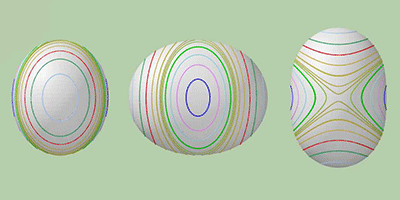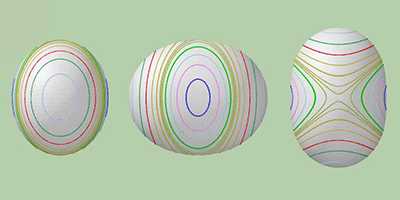Squashed Nuclei
Most nuclei are either spherical, or ellipsoidal like a football (the American variety.) But a much rarer possibility is a triaxial nucleus, which is shaped like a flattened football. In Physical Review C, Yosuke Toh, at the Japan Atomic Energy Agency in Tokai, and colleagues report that germanium- ( ), a stable isotope, is one of few known examples of a nucleus that has this triaxial symmetry in its lowest energy state. The finding is an important opportunity to test nuclear models, which predict the shape of a nucleus based on the number of neutrons and protons, and their interactions.
Nuclei that are triaxial in their ground state were first predicted around 1960. These “rigid” triaxial nuclei were initially assumed to be fairly common. Instead, virtually all known nuclei lacking cylindrical symmetry have turned out to be “soft,” meaning the football shape oscillates between being squashed and unsquashed. To distinguish rigid and soft shapes, which have different origins, experimentalists measure the energies of nuclear states with different angular momenta: For both shapes, there are deviations—known as “staggering”—from the usual smooth variation in energy with increasing angular momentum, but the staggering for rigid, triaxial nuclei is opposite to that for soft, asymmetric nuclei.
Toh et al. used Argonne National Lab’s Tandem Linear Accelerator System (ATLAS) to produce a beam of nuclei, which they smashed into a uranium target. Gamma rays emitted from the germanium nuclei after impact allowed the researchers to identify the energies of just the right set of states needed to determine the nuclei’s triaxial symmetry, though the staggering pattern they observed is less pronounced than models predicted. – Rick Casten





